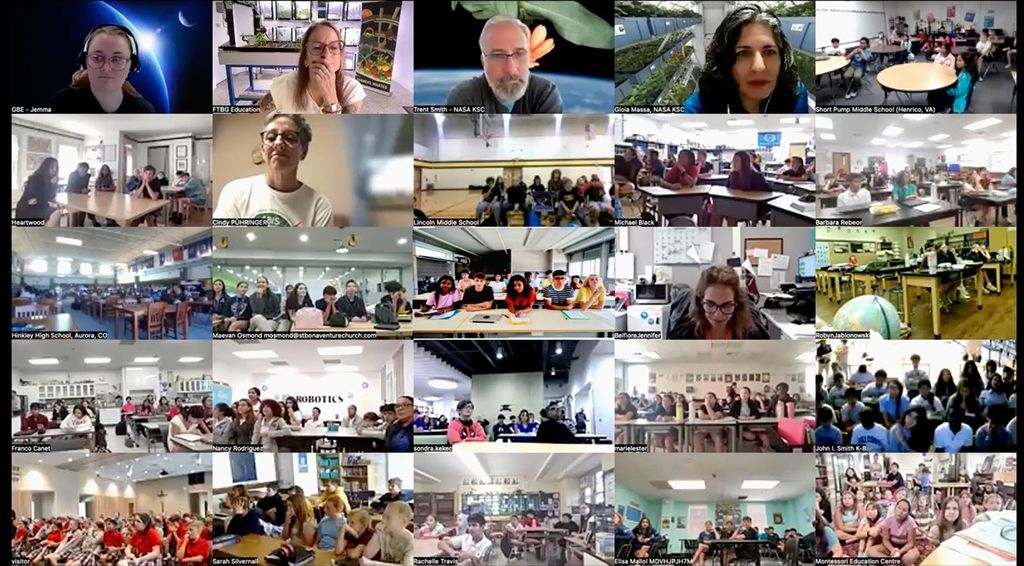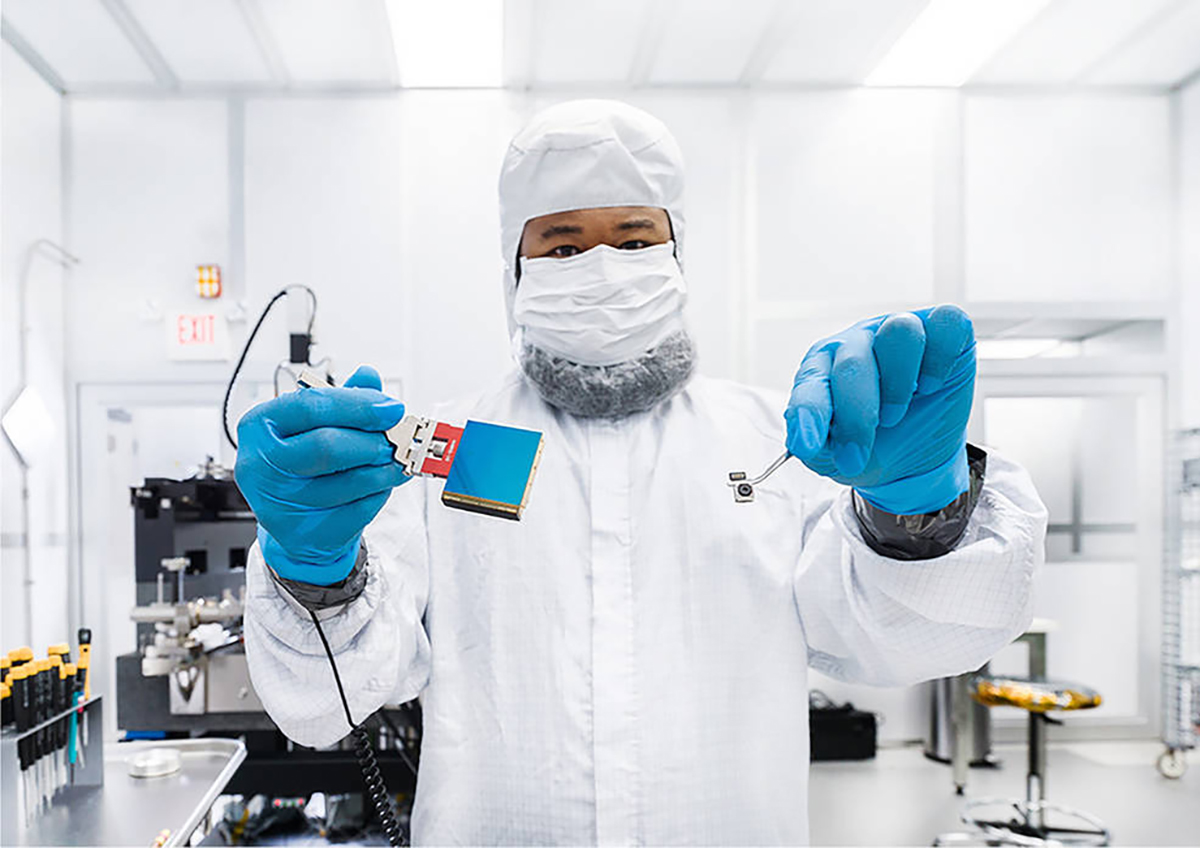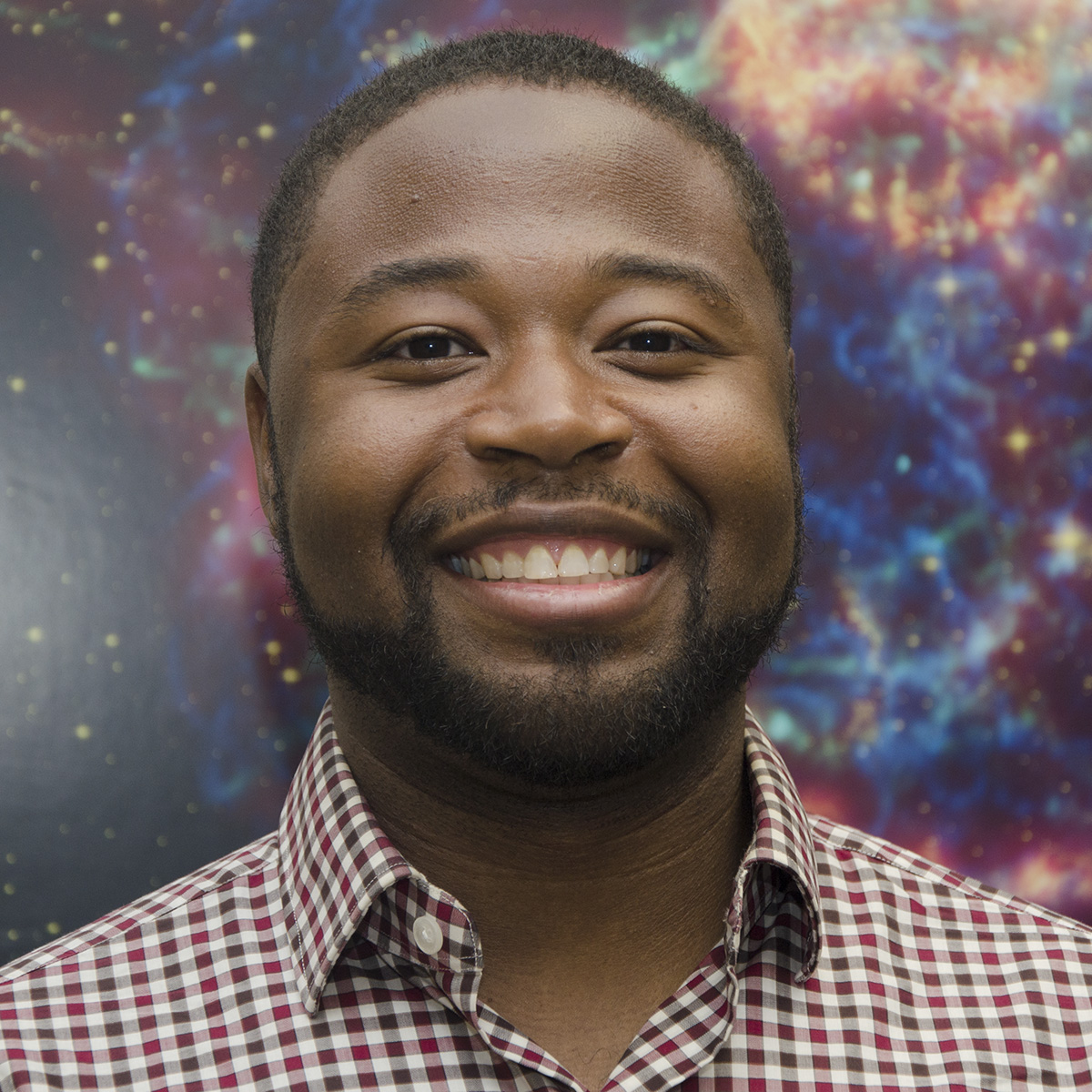Name: Gregory Mosby, Jr.
Title: Research Astrophysicist
Organization: NASA GSFC – Code 665 Observational Cosmology Lab
What do you do at Goddard and why does it interest you?
I do research on how galaxies change and grow over time, with an emphasis on trying to understand how the supermassive black holes in the centers of galaxies might impact this growth. Related to this work, I work with near-infrared detectors to optimize their performance for answering scientific questions. Specifically, I’m a detector scientist on the Nancy Grace Roman Space Telescope project science team, and I’m helping the project select its 18 flight detectors. All of this work is interesting to me because it involves solving multifaceted problems that cross the boundaries of disciplines. And it’s exciting to work on developing new ways to solve these problems whether it includes borrowing techniques from statistics, physics, or applied math.
What is your education background, and how did you end up at Goddard?
I went to public school throughout elementary, middle, and high school in Memphis, Tennessee. I attended Yale University for college, and that’s when I decided to branch out and explore physics. I had always been interested in physics since I started calculus in high school, but I opted to take advanced chemistry. I was always fascinated by the astronomy and physics shows on PBS, NOVA, and Discovery Channel, but I never saw those as options for myself. However, in college I let my curiosity steer me, and I signed up for my first physics class. I was instantly hooked. I definitely felt behind, but I connected with the calculus and enjoyed how physics could be used to make sense of the world. I persevered, and in short time participated in my first paid summer research project thanks to the STARS program that was headed up by a magnanimous black chemist Dr. Iona Black. That summer introduced me to science research as a career or something that I could use to support myself and family.
By my junior year, I had committed to physics and astronomy even though they weren’t my easiest classes. I had my first astronomy research experience with Dr. Lori Allen, classifying young stellar objects in a molecular cloud in Orion. I really enjoyed getting to use computer programming and the observational astronomy I’d been learning to answer questions about the universe.
After college, I attended graduate school at University of Wisconsin, where I was an NSF Graduate Fellow. After receiving my PhD, I won a NASA Postdoctoral Program Fellowship at NASA Goddard, where I later applied for a permanent civil servant job in the Astrophysics Science Division to continue my work on observational astronomy and near infrared instrumentation.
What is a challenge you have faced and overcome in your education and career?
While I was successful in Wisconsin, at the same time it could be very isolating as one of only a few hundred Black graduate and professional students in all of UW Madison. In my time there, I’d befriended other marginalized colleagues from the graduate school’s multicultural student network, but ultimately myself and a team of other graduate students including Grey Batie and Karla Hall restarted the Black Graduate and Professional Student Association to be able to connect Black students across the campus. Creating a space on campus for Black students to be our full selves together on campus was a key to my success in Wisconsin. And I would encourage the budding scientists out there to seek out opportunities to be in community with one another and support one another, because no one succeeds alone.
What drew you to study near-infrared instrumentation and galaxy evolution today?
The detectors that we use to record images of the sky are a key part of how we make sense of the world around us. These devices perform a simple function, but as we push to make more sensitive and careful measurements, their operation and optimization becomes a fascinating problem. I could say the same thing about looking at galaxies and their colors, which we use to infer their growth histories. We see galaxies at a snapshot in time, but with careful analysis we can tease apart the role these large concentrations of stars play in the history of the universe, and ultimately what role they will play in the future. Galaxies host the largest concentrations of normal matter in the universe (including you and me!) so understanding their past and fate is a gripping problem.
What is the coolest “fun space fact” that you have learned in your time working at Goddard?
From estimates using planets detected using a technique called microlensing, we think on average every star in the Milky Way galaxy has at least 1 planet.
What do you enjoy doing outside of work?
I love playing and listening to music. I play saxophone (alto primarily), but have been learning piano and guitar, and would love to play even more instruments.
By Brooke Hess Homeier
NASA’s Goddard Space Flight Center in Greenbelt, Md.






























